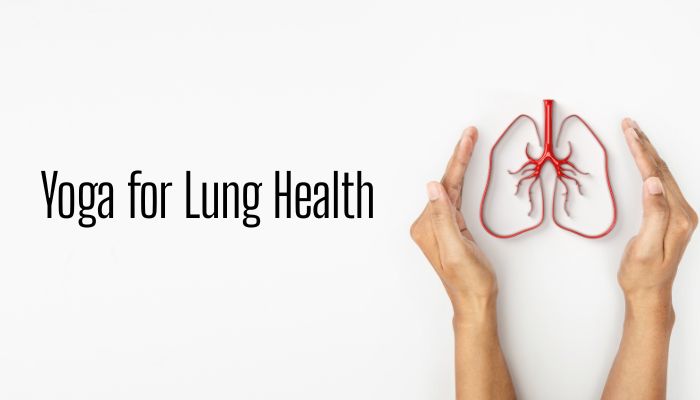Worry about your concern!!
Online consultation · Starts at just ₹199
Consult with top specialist doctors in their fields


Yoga for Lung Health: Boost Respiratory Function Naturally
In our fast-paced world, where air pollution and stress are constant companions, maintaining good lung health is paramount. One powerful and holistic approach to achieving this is yoga. This age-old Indian practice combines physical postures, breathing techniques, and meditation, and it has several advantages for lung health and respiratory performance. Let's examine how yoga may strengthen respiratory muscles, increase lung capacity, and improve respiratory health in general.
Enhanced Lung Capacity
One of the primary benefits of yoga for lung health is its ability to enhance lung capacity. Various yoga asanas (postures) and pranayama (breathing exercises) focus on deep, controlled breathing, which encourages the lungs to expand fully. This practice increases the amount of oxygen entering the body and enhances the efficiency of gas exchange in the lungs.
For instance, the practice of Anulom Vilom (alternate nostril breathing) promotes balanced and deep breathing, which can help in expanding the lung capacity. Similarly, Bhramari Pranayama (humming bee breath) involves extended exhalation and can significantly increase lung volume over time. With regular practice, individuals can experience improved lung capacity, making it easier to perform daily activities without feeling breathless.
Strengthening Respiratory Muscles
Yoga also plays a crucial role in strengthening the respiratory muscles. Many yoga poses, such as Bhujangasana (cobra pose) and Dhanurasana (bow pose), involve stretching and strengthening the muscles of the chest and abdomen. These muscles are vital for efficient breathing, and their conditioning leads to better respiratory function.
The practice of Kapalabhati Pranayama (skull-shining breath) specifically targets the diaphragm, the primary muscle responsible for breathing. By repeatedly contracting and relaxing the diaphragm, this exercise helps in building its strength and endurance. A strong diaphragm is essential for deep and effective breathing, reducing the effort required for each breath and improving overall respiratory efficiency.
Improved Oxygenation and Blood Circulation
Yoga's emphasis on controlled breathing and mindful movement contributes to better oxygenation of the body. Deep breathing exercises increase the intake of oxygen, which is then transported to various tissues and organs, promoting their optimal function. Improved oxygenation also means that more oxygen reaches the cells, enhancing their ability to produce energy and perform efficiently.
Furthermore, certain yoga poses, like Sarvangasana (shoulder stand) and Halasana (plow pose), encourage the reversal of blood flow, aiding in better circulation. Enhanced blood circulation ensures that oxygen and nutrients are effectively delivered to the lungs and respiratory muscles, supporting their health and function.
Reduction in Stress and Anxiety
Stress and anxiety have a significant impact on lung health, often leading to shallow and rapid breathing patterns. Yoga, with its focus on relaxation and mindfulness, can help mitigate these effects. Practices such as Savasana (corpse pose) and Yoga Nidra (yogic sleep) promote deep relaxation, reducing stress and anxiety levels.
The reduction in stress levels also leads to a decrease in the production of stress hormones like cortisol, which can constrict blood vessels and increase heart rate. By calming the nervous system, yoga helps in maintaining steady and deep breathing patterns, thereby supporting lung health.
Supporting Respiratory Conditions
Yoga has been found to be particularly beneficial for individuals with respiratory conditions such as asthma, chronic obstructive pulmonary disease (COPD), and bronchitis. Pranayama techniques, in particular, can help alleviate symptoms and improve lung function in these individuals.
For instance, Ujjayi Pranayama, often known as ocean breath, produces a calming sound by using slow, deliberate inhalations and exhalations via the nose. This method can improve airflow, lessen bronchospasm, and open up the airways. In a similar vein, channel cleaning breath, or Nadi Shodhana, facilitates better breathing by clearing the nasal passages.
Conclusion
Incorporating yoga into one's daily routine offers a myriad of benefits for lung health and respiratory function. Through the practice of asanas and pranayama, individuals can enhance lung capacity, strengthen respiratory muscles, improve oxygenation, reduce stress, and support overall respiratory health. Whether you are looking to maintain healthy lungs or manage existing respiratory conditions, yoga provides a holistic and effective approach to achieving optimal lung health.


